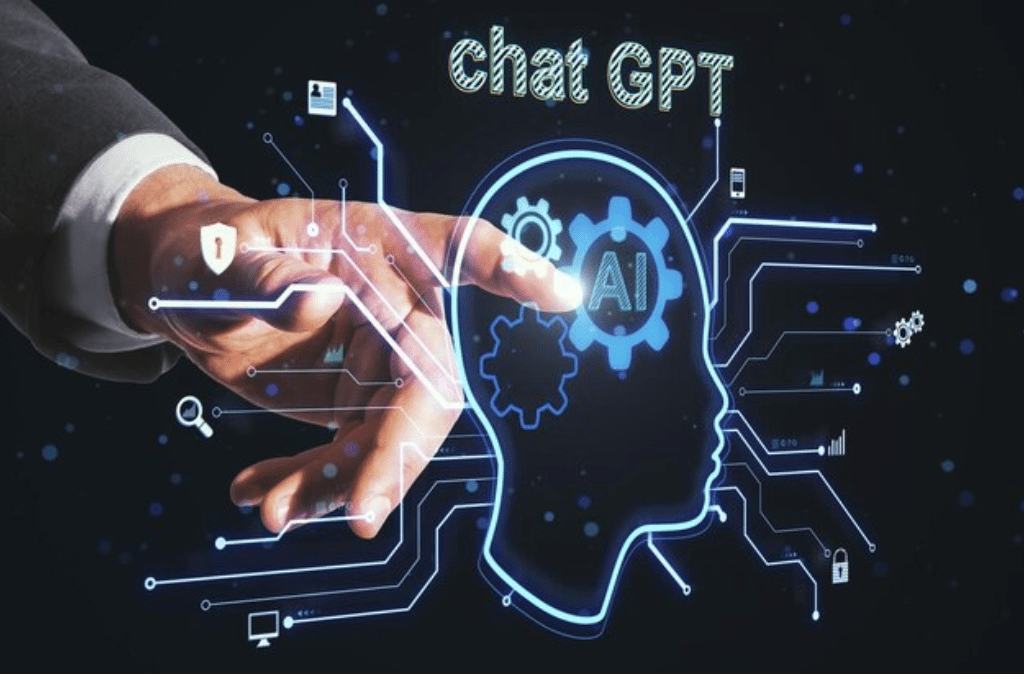
Top 20 AI Programming Frameworks for Developers
The processing of vast amounts of data and its application in industry have been made easier by artificial intelligence. With the development of AI and ML, data scientists and developers now have access to a greater variety of tools and frameworks. Some of these will be enumerated in the following order in this article on AI Programming Frameworks for Developers.
What is an AI Framework?
Building sophisticated, intelligent systems that can learn, adapt, and evolve requires the use of AI frameworks as the fundamental building blocks. An integrated collection of libraries created to make the creation and use of AI algorithms easier to understand is another way to characterize an AI framework.

These frameworks make algorithm creation and deployment more efficient by offering pre-configured functions and libraries. This allows developers to customize AI models to specific tasks without having to start from scratch with the underlying architecture.
Why Choose an AI Framework?
To create AI-driven software while saving money, time, and resources, developers are depending more and more on matching frameworks and libraries. Let’s look at what artificial intelligence frameworks and libraries are: a set of ready-made instruments and materials that make developing applications based on AI easier.
The development of intelligent software is facilitated by these frameworks, which offer a platform for the application of deep learning and machine learning algorithms.
List of AI Programming Frameworks
- TensorFlow
- PyTorch
- Scikit-Learn
- Deeplearning4j
- Keras
- OpenAI
- Turi Create
- JAX
- OpenNN
- MLlib (Spark)
- IBM Watson
- Chainer
- Theano
- CNTK (Microsoft Cognitive Toolkit)
- Apache Mahout
- MXNet
- Microsoft Azure ML Studio
- Nvidia Deep Learning AI (DLA)
- OpenAI Gym
- Hugging Face
1. TensorFlow
TensorFlow will very certainly be the result of minimal study on AI frameworks. It is an open-source platform created by the Google Brain team for use in production and research within Google. Under the terms of the Apache License 2.0, the main version was made available in 2015. It works with a variety of programming languages, including Java, C++, Python, and JavaScript.
Key feature
- Distributed Computing: Using several machines to train models is made possible by TensorFlow support for distributed computing.
- Computational Power: This has tremendous processing power because it may be used on any CPU or GPU.
- High-level APIs: Machine learning can be built and trained more easily with TensorFlow’s high-level APIs, like Keras and Estimators.
- Pre-built Models: Tensorflow offers ready-made models for a range of applications, including object recognition, natural language processing, and picture categorization.
2. PyTorch
A popular kind of machine learning used in tasks like language processing and picture identification is deep learning, and PyTorch is a feature-rich framework for creating these models. Most machine learning developers can learn and use it very easily because it is written in Python.
Reverse-mode auto-differentiation, which PyTorch uses to enable on-the-fly calculation graph modifications, and its outstanding support for GPUs set it apart. For quick prototyping and testing, this makes it a well-liked option.
Key feature
- Optimizations of TorchInductor-CPU, including Bfloat16 inference path for the torch. compile
- Inference path for CPU dynamic form for the torch. compile
- prototype C++ wrapper
- Scaled dot product algorithm for CPU based on flash attention
- Post-training quantization for PyTorch 2 export using an x86 back end and an inductor
3. Scikit-Learn
Scikit-Learn is a machine-learning library written in Python. This user-friendly, open-source application has features for machine learning and data mining along with extensive training and documentation. Deep learning jobs may not be the ideal fit for Scikit-Learn, but it is a good fit for smaller projects and rapid model prototyping.
Key feature
- Statistical tests like ANOVA and chi-squared.
- Recursive feature elimination.
- Feature importance from tree-based models.
- Model-based selection through regularization.
4. Deeplearning4j
Deep learning on the JVM can be accomplished with the Eclipse Deeplearning4j package of tools. It’s the only framework that enables you to train models from Java while interacting with the Python ecosystem using a combination of Python execution through our cpython bindings, support for model imports, and interoperability with alternative runtimes like onnxruntime and tensorflow-java.
Key feature
- Linking to different sources of data
- data cleaning
- use the information to create vectors that a neural network can comprehend
- constructing and adjusting a neural network
- deploying to production via embedded environments like Raspberry Pis or AndroidTM phones, or via REST or Spark
5. Keras
It may surprise you to learn that Keras can operate on top of Tensorflow and Theano. Compared to its competitors, this neural networks API is high-level. Enabling speedier experimentation was the main goal of Keras.
Key feature
- Flexibility in extension: New modules are simple for developers to add, just as new functions or classes. Moreover, there are plenty of examples of the support in the current modules. Because it’s so simple to create new modules, Keras is the most popular platform for advanced research because of its comprehensive expressiveness.
- User-friendliness: The fact that Keras is human-designed is its best feature. In contrast, others are made for the machines. One of its objectives is to prioritize the user experience and make it the most prominent feature.
- Reduced mental strain: Keras’s straightforward and reliable APIs lessen cognitive load. It offers concise, understandable feedback on any kind of user error. Keras reduces the amount of user actions needed for any typical use case.
- Python’s blessing: Python code is used in Keras to write models. As such, it offers ease of extensibility, is compact, and is simpler to debug.
6. OpenAI
In the field of artificial intelligence, OpenAI has gained widespread recognition, particularly for its remarkable GPT language models. This group creates state-of-the-art AI research and makes its models accessible via user-friendly APIs, enabling the general public to access advanced language understanding skills.

Key feature
- Complex AI Models: Sophisticated text analysis and conversational agents are only two of the many uses for OpenAI’s GPT models, which are among the best available.
APIs that are easy to use: With the help of OpenAI’s simple-to-use APIs, anyone can begin utilizing AI’s potential in their projects without much difficulty.- Assistance and Resources: Although the platform requires a paid subscription for certain functionalities, it provides a wealth of assistance and resources, making it an invaluable resource for learning and creating AI applications.
7. Turi Create
Turi development makes it incredibly simple to develop custom machine-learning models. Turi Create may be used by anyone without any prior knowledge of machine learning, and it facilitates the creation of systems for activity classification, object identification, image classification, image comparison, and add recommendations.
Key feature
- It’s simple to operate.
- Adaptable to utilize.
- The model is prepared for deployment to iOS, MacOs, watchOs, and TVOs apps.
- One of its wilder characteristics is its ability to use the Machine Learning Model and read.csv files (Comma Separated Values).
8. JAX
DeepMind just released JAX (Just After execution), a machine/deep learning library. As opposed to Tensorflow, JAX is only used for research and is not an official Google product. The research community is using JAX more and more because of several truly great features. Moreover, JAX’s NumPy-like syntax minimizes the need to learn new syntax to utilize it.
Key feature
- JAX offers a single NumPy-like interface for calculations conducted locally or distributedly on CPU, GPU, or TPU.
- Open XLA, an open-source machine learning compiler ecosystem, provides built-in Just-In-Time (JIT) compilation for JAX.
- Because JAX functions do automatic differentiation conversions, they facilitate the efficient evaluation of gradients.
- To map JAX functions over arrays that represent batches of inputs efficiently, it is possible to vectorize them automatically.
9. OpenNN
The C++ software library OpenNN is designed for advanced analytics. It is intended for researchers and developers who require a reliable and quick platform for creating neural networks. OpenNN is a good option for applications where processing efficiency is essential because of its emphasis on speed and performance.
Key feature
- Reasonably priced.
- Dependability.
- adaptability.
- granting licenses.
- Free of errors.
- Simple to use.
- Protection
10. MLlib (Spark)
The Machine Learning Library (MLlib) of Apache Spark is a robust and scalable machine learning library made to integrate easily with other Spark components. It gives data scientists a simple platform to work with when tackling difficult distributed data problems, freeing them up to concentrate on problem-solving and model-building.
Key feature
- Scalability: Data scientists can handle and examine huge datasets that are dispersed over clusters thanks to MLlib’s scalable architecture.
- Linguistic compatibility: An extensive user base can utilize MLlib due to its support for numerous programming languages. Java, Scala, Python, and R APIs are offered.
- ML Formulas: Typical learning methods including grouping, collaborative filtering, regression, and classification
Saturation: Dimensionality reduction, feature extraction, transformation, and selection - Overall Functionality: End-to-end capabilities for machine learning processes are provided by MLlib, from data preprocessing and munging to model training and large-scale prediction making.
11. IBM Watson
IBM Watson is a collection of machine learning and artificial intelligence services. For creating and implementing AI-powered applications, such as computer vision, natural language processing, and predictive analytics, it provides tools and solutions.
Key feature
- A statistical instrument
- Data Interpretation
- Making Choices
- Model Construction
- Deep/Machine Learning Services
- Deployment
12. Chainer
Chainer is an adaptable neural network framework built with Python. Preferred Networks, a Japanese firm, developed it. With this framework, writing intricate architectures is easy and natural.
Key feature
- CUDA processing with support for many GPUs through PyCUDA; various network topologies (feed-forward nets, convnets, recurrent nets, recursive nets, per-batch architectures).
- array and layer implementations in several dimensions.
- preset functions, control flow instructions, and forward computation.
- forward prop to
- handle the incoming data.
- gradient computation using backprop.
- The “Define-by-Run” technique serves as the main idea.
13. Theano
Fundamentally, Theano stands for the union of labor and variety. Utilizing Python’s strength, deep learning relies heavily on it because of its capacity to carry out multi-string mathematical computations.
A key model for deep learning, the Python function library is made for fast applications that perform flawlessly on both CPUs and GPUs. Come along with us as we investigate this further.
Key feature
- Optimizing Stability: Using more stable methods, Theano can identify certain unstable expressions and assess them.
- Optimization of Execution Speed: As previously said, theano is significantly quicker than Python since it can use modern GPUs to perform portions of expressions on your CPU or GPU.
- Symbolic Distinction: Theano is intelligent enough to compute gradients by autonomously creating symbolic graphs.
14. CNTK (Microsoft Cognitive Toolkit)
An open-source platform for creating Deep Learning models is Microsoft’s Cognitive Toolkit or CNTK.
We decided to make sure Valohai supports this relatively new framework well because it has been gaining interest. CNTK’s native support for multi-node, multi-GPU training has proven to be one of its advantages over other frameworks; TensorFlow, for example, has been finding it difficult to handle this feature. Perhaps you should give it a try if you are working with very huge datasets.
Key feature
- Inbuilt parts: BrainScript, C++, or Python multi-dimensional dense or sparse data can be handled by CNTK’s optimized built-in components.
- Effective resource management: CNTK enables 1-bit SGD parallelization over many GPUs/machines with good accuracy.
- Easily express your network: Models written in Python, C++, C#, or BrainScript are simple to evaluate.
Its symbolic Recurrent Neural Network (RNN) loops are thoroughly optimized. - Evaluating the performance of the model: CNTK offers several tools to gauge how well the neural networks you create operate.
15. Apache Mahout
The Apache Software Foundation is developing open implementations of distributed machine learning algorithms with a collaborative filtering, clustering, and classification focus under the Apache Mahout project.
The MapReduce paradigm is used to implement these machine learning methods on top of Apache Hadoop, although it does not impose any restrictions on contributions to Hadoop-based implementations. Mahout also offers basic Java collections and Java libraries for popular mathematical operations.
Key feature
- Proven Algorithms: Mahout employs a collection of algorithms to attempt to address typical issues that arise throughout a wide range of sectors.
- Scalable to Large Data Sets – Designed to be distributed over sizable data center clusters utilizing the map/reduce paradigm and Apache Hadoop.
- Active & Open Community – Mahout features a community forum where members can discuss and resolve concerns with one another.
16. MXNet
Deep neural networks can be defined, trained, and implemented on a variety of platforms, including mobile devices and cloud infrastructure, with the help of Apache MXNet (MXNet), an open-source deep learning framework. In addition to supporting several languages and a flexible programming approach, it is highly scalable, enabling quick model training.
Key feature
- Quick and Flexible: Multi-GPU and distributed multi-host workloads are easily supported.
- Support for multiple programming languages: Interfaces for Python, Scala, R, Java, C++, Julia, Matlab, JavaScript, and Go.
- Appropriated: Backed by the very active open-source community, Microsoft Azure, Amazon Web Services (AWS), and the Apache Software Foundation.
- Handheld: Enables a successful deployment across a variety of hardware setups and platforms, including serverless computing, containers, low-cost devices, and Internet of Things devices.
- Changeable: Allows for programming that is both imperative and symbolic.
17. Microsoft Azure ML Studio
A cloud service called Azure Machine Learning is designed to expedite and oversee the machine learning (ML) project lifecycle. It can be used in daily workflows by engineers, data scientists, and machine learning experts to manage machine learning operations (MLOps) to train and deploy models.
Key feature
- It has full integration with R and Python SDKs.
- It features a revised drag-and-drop interface that is commonly referred to as Azure Machine Learning Designer (preview).
- It is compatible with MLPipelines, which allow us to create adaptable, modular process automation pipelines.
- Depending on the nature of the project, it supports several model formats.
- It offers code-first and no-code solutions for automated model training and hyperparameter adjustment.
- It aids in initiatives involving data labeling.
18. Nvidia Deep Learning AI (DLA)
You can accelerate deep learning workloads using NVIDIA’s AI platform at the edge, which offers best-in-class computing. Specifically, the optimized software stack for deep learning inference workloads is accelerated by DLA, the fixed-function hardware on these platforms.
Key feature
- Public Domain: Developed in an open-ended community with a strong emphasis on contributions on GitHub.
- Total Resolution: Includes Linux drivers, a compiler, a Verilog and C model, test benches and test suites, kernel and user-mode applications, and software development tools. Portable to multiple OS systems with ease.
- Manageable: Ideal for expanding over a broad spectrum of Internet of Things devices.
Proven Hardware Architecture: Underpinned by a comprehensive verification suite, Xavier is the world’s first autonomous CPU, created by NVIDIA for automotive devices among other things. - Astute in Deep Learning: Clever, effective, and equipped to handle the vast array of NVIDIA-supported technologies.
19. OpenAI Gym
An action results in a positive or negative reward that accumulates at each time step. OpenAI Gym is a Pythonic API that offers simulated training environments for reinforcement learning agents to act upon observations of their surroundings. The agent is penalized for every unforeseen decision it makes, even as it attempts to maximize benefits.
Key feature
- permits interaction with a variety of situations by providing a standardized and straightforward user interface.
- Provides a vast array of settings, from easy puzzles to intricate video games.
- allows for the standard comparison of several algorithms.
- comprises tools for tracking training progress and displaying the performance of reinforcement learning agents.
20. Hugging Face
The Transformers library, which consists of pre-trained models and is the mainstay of contemporary natural language processing, is nearly always associated with Hugging Face. Hugging Face, however, is now a one-stop shop for AI developers since it offers capabilities for both image and voice processing in addition to text.
Key feature
- Current Models of State: With the help of Hugging Face, you can always stay up to date on the most recent pre-trained models and advance your AI skills.
- Togetherness and Community: Access to an abundance of knowledge and resources is made possible by the active community and open-source collaboration.
- Connectivity Across Platforms: No matter what platform you’re using, Hugging Face makes AI creation more accessible than ever with tools for both novices and seasoned pros.
How to Choose the Right AI Framework
Developing and deploying artificial intelligence (AI) models successfully depends on selecting the appropriate framework. The abundance of AI tools and frameworks available on the market overwhelms decision-makers.

The process of choosing the top AI model frameworks for your projects will be walked you through in this post. The best AI tools and well-liked frameworks that may greatly improve the effectiveness and accuracy of your AI models will be covered.
Key feature
- For your initiatives to be successful, selecting the appropriate AI model framework is essential.
- Reducing the possibilities might be aided by assessing the particular needs of your project.
- Numerous features and benefits are available from the best AI tools and frameworks available on the market.
- Take into account the frameworks’ community support, scalability, and adaptability.
- Making an informed choice will be aided by comparing the advantages, disadvantages, and strengths.
Which AI model is best?
Among the top AI model frameworks are scikit-learn, PyTorch, TensorFlow, and Keras. A plethora of tools and resources are offered by these frameworks to efficiently design and train AI models.
How much does AI Software Cost?
The intricacy and scope of the project determine this. The total cost of an AI software’s MVP version ranges from $35,000 to $100,000.
Which program is used for AI?
In Python. Python’s data visualization and analytics features have made it the go-to general-purpose programming language for AI development. Data scientists and analysts can more easily understand its user-friendly syntax.
Conclusion
TensorFlow’s size and PyTorch’s flexibility make for a formidable combination in the grand show of AI development. Keras is the laid-back companion for those new to deep learning, whereas Scikit-Learn is the dependable old friend for machine learning classics. MXNet expands effortlessly, XGBoost handles structured data deftly, and Caffe is the preferred choice for vision workloads.
As a data practitioner, the ideal AI Programming Framework or library is ultimately the one that supports your objectives and fits your unique demands. So grab a rag, plunge into the field of artificial intelligence, and begin using the appropriate tools to create more intelligent software.






